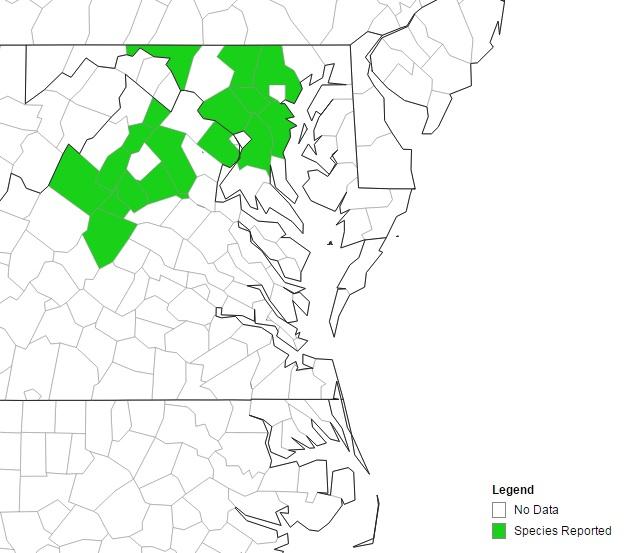Wavyleaf basketgrass was first identified in the United States in Baltimore County, MD in 1996. It is less well-known than other invasives, but it is spreading rapidly in Maryland and Virginia.
What is it?
Wavyleaf basketgrass (Oplismenus undulatifolius) is native to southeast Asia, Australia, and southern Africa. Its first documented appearance in the US was along the Patapsco River. It was found by an amateur botanist, and how it arrived is apparently unknown. One theory is that it was improperly disposed of at a landfill, which is adjacent to one of the first reported sites.
However, from that one patch, it spread rapidly. In 2005, it was found in small patches in Little Paint Branch Park in Prince George’s County, 20 miles from the first infestation. By 2008, the small patches had grown and blanketed 150 acres. By 2016, it had spread across the Potomac River to counties in Virginia along the Blue Ridge and into Shenandoah National Park. See the distribution map below.


By 2025, the Maryland Biodiversity Project reported it had spread to all but six counties in the state. See the distribution map below at right.
Dr. Vanessa B. Beauchamp, director of the Wavyleaf Mapping Project at Towson University said that this grass shows many of the qualities of a “successful and damaging invasive species. In some areas, this shade-tolerant grass completely carpets the forest floor, leaving little room for native species. Its perennial life style enables it to emerge, year after year, through thick leaf litter, allowing it to colonize vast areas of forest inaccessible to annual invasive grasses like stiltgrass.”
Wavyleaf basketgrass grows low to the ground and spreads rapidly across the forest floor. It tolerates a variety of soil types in moist and shaded environments. Leaves of the grass die off each winter, but the plants will survive cold winters and leaves will re-emerge each spring.
How does it spread?
Wavyleaf basketgrass spreads via dozens of sticky seeds found atop spiky flower clusters. The seeds become attached to anything that brushes past them, such as deer, small animals and birds, as well as people and dogs. All provide excellent means of spreading the seeds. Additionally, no native species seem to eat it.
How can I identify it?
Wavyleaf basketgrass is a low-growing perennial with shallow roots. Its leaves are flat, about a half-inch wide and 1.5 to 4 inches long. The leaves are deep green with undulating ripples across the leaf surface. The leaf sheath and stem are particularly hairy with short hairs. There are two look-alike basketgrasses that occur naturally in the Southeastern United States, but neither in native to the mid-Atlantic region. See the image gallery below.
How can I control it?
One of the best ways to reduce this invasive’s impact is to stay away from it during the months when seed dispersal is common (August through November). Be sure to remove all seeds from shoes, clothing, pets and equipment before leaving the area. Loops of adhesive tape can remove the seeds; merely brushing at them does not.
Because of the grass’s shallow root system, the most efficient way to remove it is by hand, especially if is growing in small patches with other vegetation. The grass can also be killed with the herbicides Roundup and Envoy Plus.
For more information:
Wavyleaf Basketgrass (University of Maryland Extension)
Wavyleaf Basketgrass: A New Forest Invader in Maryland (Maryland Dept. of Natural Resources)
